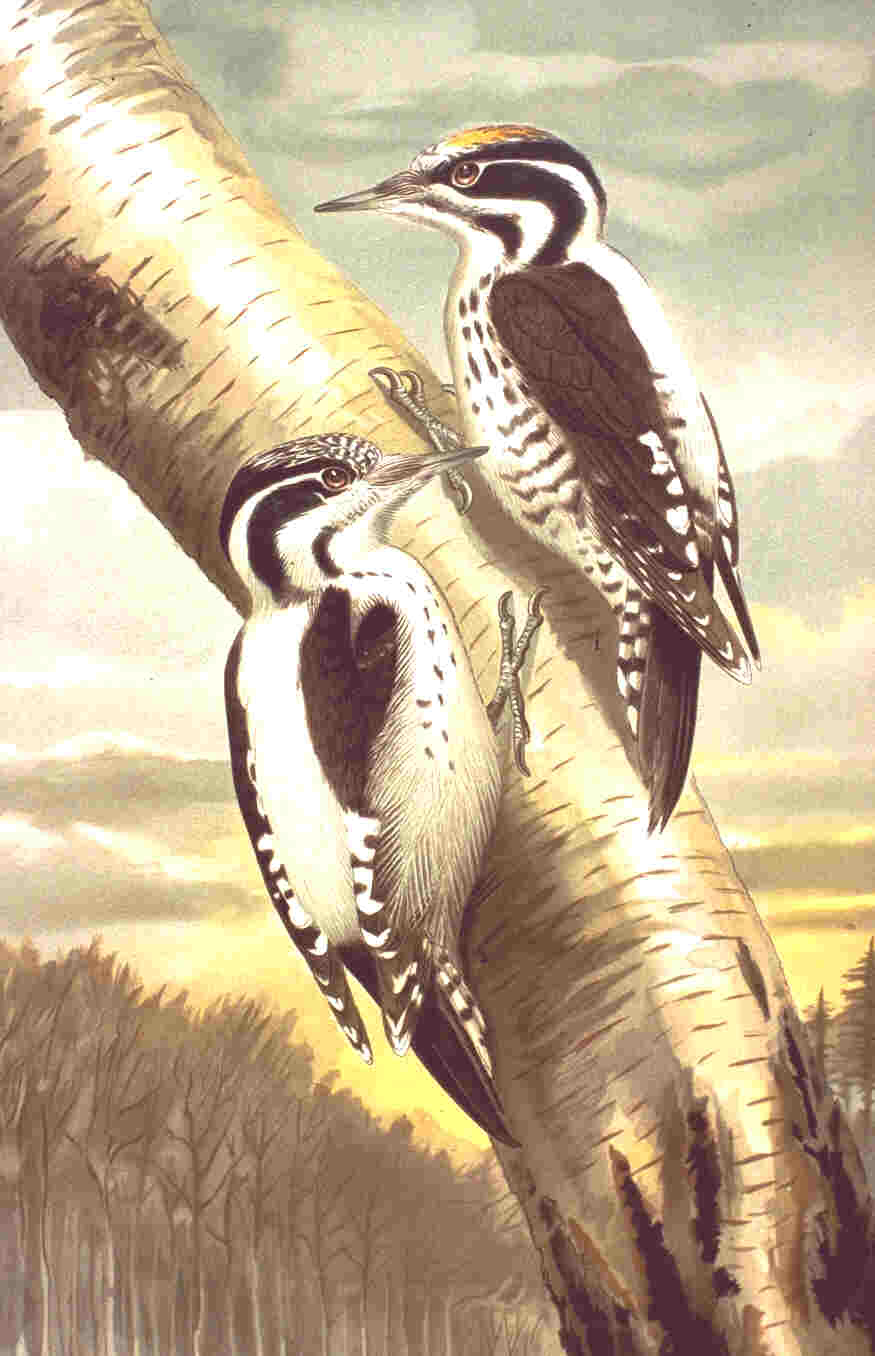- Eurasian Three-toed Woodpecker
Taxobox
name = Three-toed Woodpecker

image_width = 170px
status = LC | status_system = IUCN3.1
regnum =Animal ia
phylum = Chordata
classis = Aves
ordo =Piciformes
familia =Picidae
genus = "Picoides "
species = "P. tridactylus"
binomial = "Picoides tridactylus"
binomial_authority = (Linnaeus, 1758)The Three-toed Woodpecker, "Picoides tridactylus", is a medium-sizedwoodpecker .The adult is 21.5-24 cm in length. It is black on the head, wings and rump, and white from the throat to the belly; the flanks are white with black bars. The back is white with black bars, and the tail is black with the white outer feathers barred with black. The adult male has a yellow cap.
In
North America , the Three-toed Woodpecker can be confused with theBlack-backed Woodpecker , which it closely resembles. Identification is easier in Eurasia, where it is the only woodpecker with a yellow cap, the only one with three toes, and one of only two black-and-white woodpeckers that lack any red in the plumage. The Three-toed Woodpecker can be distinguished from theBlack-backed Woodpecker by the ladder back.The breeding habitat is
conifer ous forests across westernCanada ,Alaska and the midwesternUnited States , and across northernEurasia fromNorway toKorea . There are also populations in theAlps and theCarpathian Mountains .Recent researchFact|date=February 2007 suggests that the American and Eurasian forms should be split as separate species, Eurasian Three-toed Woodpecker, "P. tridactylus" and
American Three-toed Woodpecker , "P. dorsalis" (Baird,1858 ). The American form would then have two subspecies, "P. d. fasciatus" in Alaska, and the nominate form elsewhere.Three-toed Woodpeckers nest in a cavity in a dead conifer or sometimes a live tree or pole. The pair excavates a new nest each year.
This bird is normally a permanent resident, but northern birds may move south and birds at high elevations may move to lower levels in winter.
Three-toed Woodpeckers forage on conifers in search of wood-boring
beetle larvae or otherinsect s. They may also eat fruit and tree sap.These birds often move into areas with large numbers of insect-infested trees, often following a forest fire or flooding. In North America, this bird is likely to give way to the Black-backed Woodpecker where the two species compete for habitat.
The voice call of the Three-toed Woodpecker is a "kik" or "chik"
References
*
*(5th Edition):"Birds of Eastern and Central North America".Peterson Field Guides
Wikimedia Foundation. 2010.
